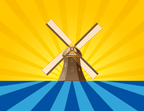River Thurne – Candle Dyke to Thurne Mouth
Candle Dyke leaves the main river to the right, the Martham Boat Building and Development boatyard is on the left. A number of holiday bungalows line both banks as the River Thurne heads towards Potter Heigham 1½ miles downstream.
On approaching Potter Heigham New Road bridge you will find moorings on the Martham bank for all boats and on the Potter Heigham bank for yachts raising and lowering their masts.

Potter Heigham
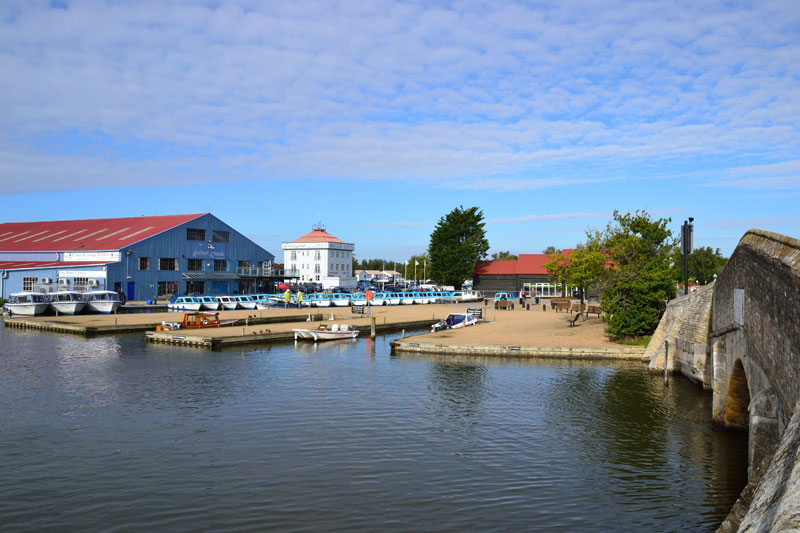
There are two low bridges at Potter Heigham, the famous medieval Potter Heigham Old Road Bridge and the Potter Heigham New Road Bridge. The medieval bridge is a semi-
Suitable moorings for craft travelling downstream from Martham can be found on the left bank just before the new bridge. On the right bank the Broads Authority have provided a dingy park and a mooring point for yachts to raise or lower their masts.
The moorings at Repps Riverside opposite Maycraft and “Dutch Tutch” are now sadly closed until further notice.
From Repps Riverside it is just a short 15 minute stroll to the Wind Energy Museum on Marsh Road at Repps with Bastwick. The museum holds open days throughout the year and has a large variety of exhibits to see with working demonstrations.
Further upstream at Potter Heigham on the left bank are moorings reserved for yachts and Herbert Woods craft. On the right before the bridge are Potter Heigham’s main public moorings. Opposite the public moorings under a footbridge is Broads Haven the Herbert Woods boatyard where additional mooring is available.
All hire craft except small day boats are required to use the services of the bridge pilot. The pilot service is operated by Phoenix Fleet boatyard. The pilot service is available Monday –
The best time to arrive at the bridge is about two hours before low water. The Potter Heigham Bridge Pilot pick up point is downstream of the bridge. There is a strong ebb and flow near the bridge so when travelling upstream stay well clear and do not try to turn around in front of the bridge. At one time over 10,000 passages were made through the bridge, more recently due to various factors it is less than 1800 a year. The tide flows fast and the river can still be congested today, take care approaching the pilot’s moorings.
To many people Potter Heigham is the area around the medieval bridge and adjacent staithe, the main village is however, ½ a mile to the north, but few visitors stray further than the shops that cluster around the River Thurne. The largest of the shops is Lathams, where you will find everything from groceries to fishing tackle and the Flour & Bean tearoom.
There are a number of boatyards here that hire day boats these would be ideal for skippers of large craft unable to pass through the bridge. The familiar Herbert Woods Tower is here overlooking the boatyard and river. The area around the old road bridge has dykes reserved for small craft to moor, and makes an ideal spot to watch the bridge pilots take large hire craft through the low bridge.
From Potter Heigham to just below Repps Staithe the banks are lined with holiday bungalows.
On the right bank 1 ¾ miles below Potter Heigham is Womack Dyke leading to Womack Water and the village of Ludham. There are new BA moorings on Womack Dyke on the right bank. Ludham and Womack Water is just a few minutes walk from these moorings.
Hunter’s Yard is on the right –
The Wherry Albion
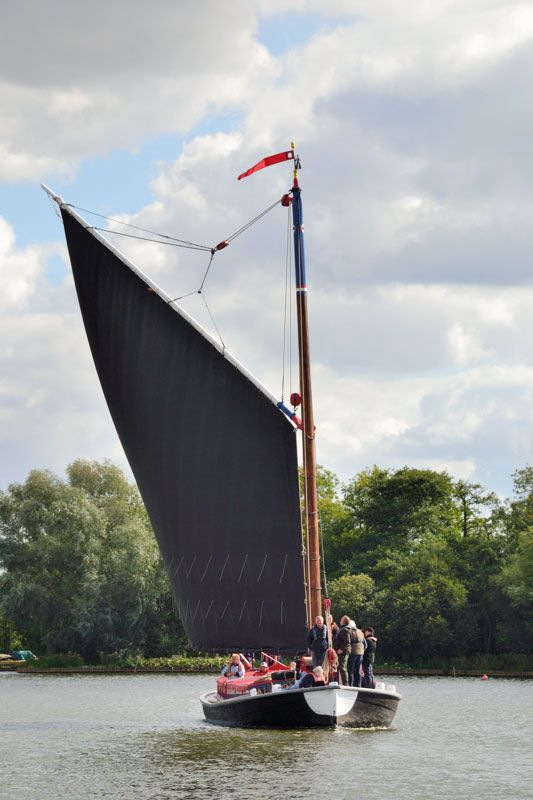
The Wherry Albion was built by B. Brighton in 1898 at Oulton Broad, she is 58′ long and 15′ wide and just under 23 tons in weight. She has the traditional black sail, but unlike other clinker-
Womack Water and Ludham
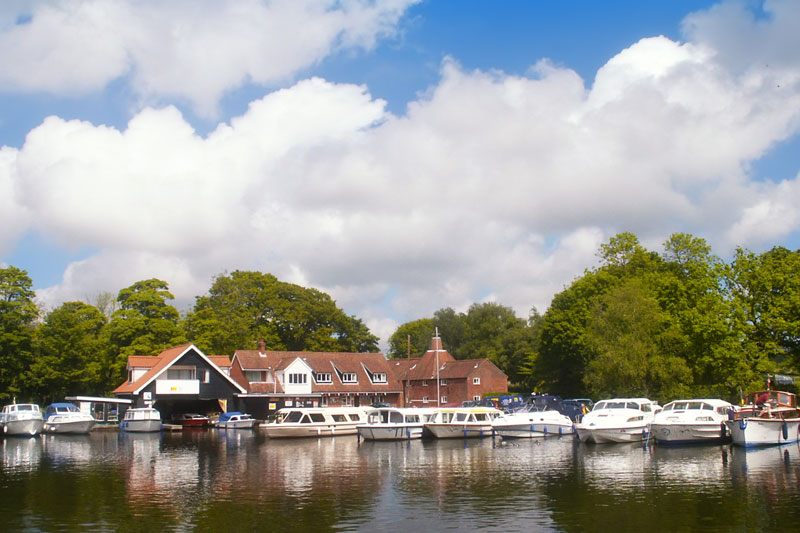
The attractive village of Ludham with its impressive 14th century St Catherine’s church, and thatched cottages is a short walk from the attractive tree-lined staithe at Womack Water. There are two small shops beside the staithe with more shops in the village including a supermarket, butchers and the King’s Arms pub.
Continuing down the River Thurne you can not fail to notice the white painted Thurne Mill, it marks the entrance to Thurne Dyke and Thurne village, 1 mile below Womack Dyke. Extensive moorings are available on both sides of the dyke (fee).
Thurne
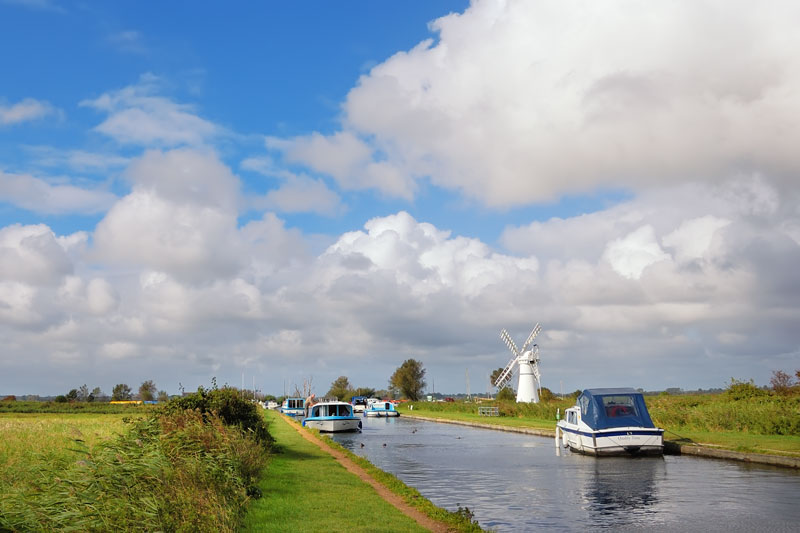
The white painted Thurne Mill is a major landmark and can be seen for miles, it houses a small exhibition and is owned by The Norfolk Windmills Trust. Thurne Dyke is over 200 metres long, mooring is available on both sides of the dyke. Mooring is free during the day with a fee payable for overnight mooring. Don’t be afraid to venture down the dyke as there is space to turn by the parish staithe. The dyke catches the setting sun and is an ideal last night mooring if you started your holiday from Potter Heigham.
At the head of Thurne Dyke is the Lion Inn and Ramblers Gallery & Giftshop. Adjacent to the Lion Inn is a large children’s play area ideal for ball games.
On the opposite bank to the dyke is St Benet’s Level Windpump.
Thurne Mouth is ½ a mile downstream, turn left for Great Yarmouth and right for Wroxham and the River Ant.
